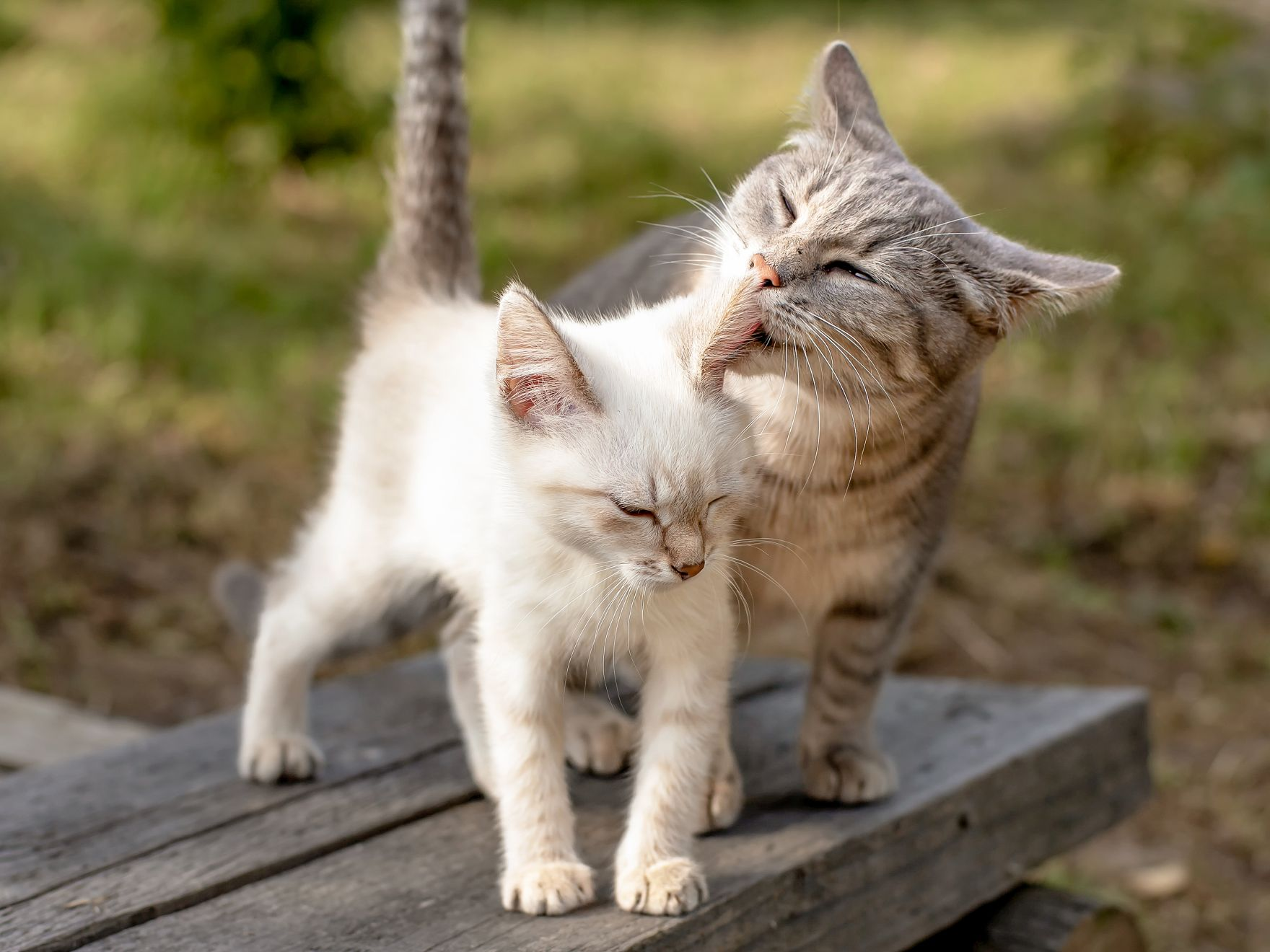Að kynna kettlinginn þinn fyrir börnum, fullorðnum og öðrum gæludýrum


Hvolpur kynntur smám saman fyrir nýju fólki
Skoðaðu líkamstjáninguna
Leyfðu kettlingnum að koma sjálfum
Haltu rónni
Sýndu þolinmæði
Sýndu nærgætni

Leyfðu kettlingnum að hvíla sig
Kettlingurinn þinn er ekki enn fær um að forðast börn þegar hann þarf tíma út af fyrir sig. Útskýrðu þess vegna fyrir börnum að kettlingurinn þurfi hvíld. Vektu hann heldur aldrei, vegna þess að svefninn er nauðsynlegur fyrir þroska hans.
Kenndu börnunum að meðhöndla hann af varfærni
Sýndu börnum hvernig á að strjúka kettlingnum og taka hann upp. Það er gert með því að renna annari höndinni undir kvið kettlingsins og halda undir afturendann með hinni. Best er þó að þau haldi ekki á kettlingnum í byrjun. Ef þau halda á honum, þarftu að ganga úr skugga um að þau haldi ekki of þétt utan um hann.
Tryggðu ró og næði
Biddu börnin að sitja róleg og bíða eftir að kettlingurinn komi til þeirra. Útskýrðu fyrir þeim að kettlingurinn geti orðið hræddur ef þau eru með hávaða og læti.
Leikið varlega
Það þarf að gera börnunum grein fyrir því að kettlingurinn þinn er ekki leikfang. Sýndu þeim hvernig er hægt að leika við kettlinginn með dótinu hans þannig að hann sé öruggur og allir hafi gaman af.
Fylgstu með
Til að koma í veg fyrir óheppilegt klór er best að fylgjast ávallt vel með þegar ung börn eru nálægt kettlingum.


Fyrsta vika kettlingsins
Fyrstu dagar og vikur kettlingsins á nýju heimili eru lykillinn að því að byggja upp gott samband við gæludýrið þitt. Láttu kettlinginn koma sér vel fyrir og komdu þér upp rútínu sem tryggir að nýi fjölskyldumeðlimurinn verði fyrir eins lítilli truflun og hægt er.